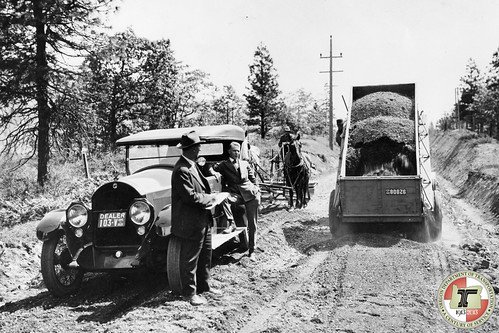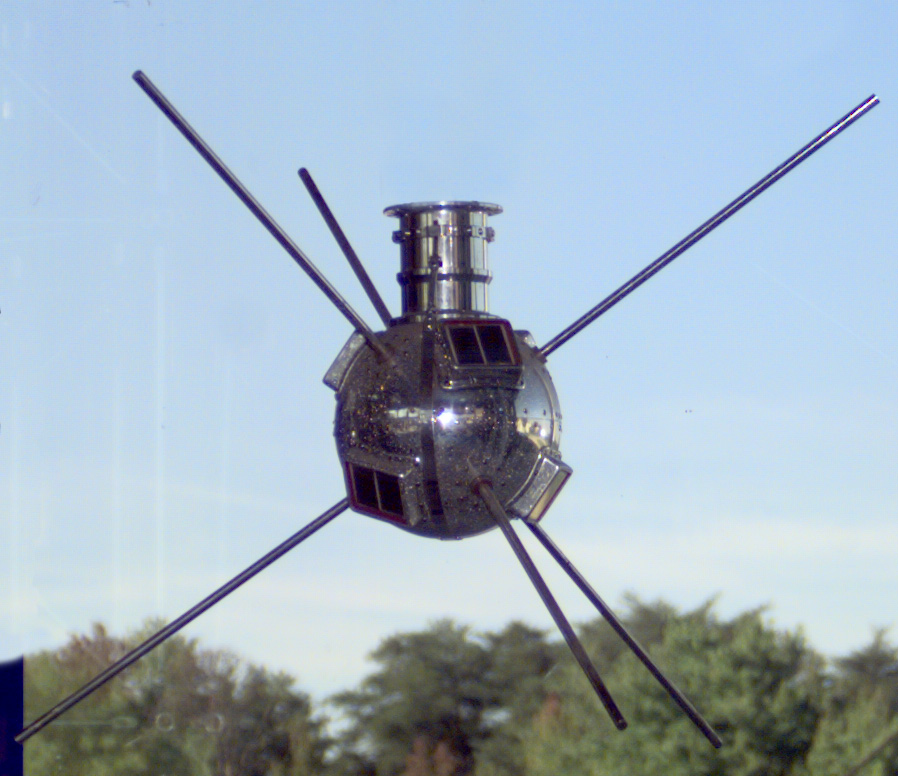Or, Why Improving Infrastructure Won’t Create a Whole Lot of Jobs.
The economic stimuli that Washington has tried in the last few years have included a number of construction programs; probably in your area, as in mine, a few project sites are marked as being the results of the Recovery Act. And in his press conference today, the President alluded to our country’s need for infrastructure repairs and intimated that, if we would only fund the needed repairs, we would see significant job growth and economic growth.

(Road construction – 1921. OregonDOT image, from Flickr, under Creative Commons.)
Sorry, Mr. President, but it doesn’t work that way anymore.
In the old days, when huge teams of men were needed to clear trails, prepare roadbeds, pour concrete or spread asphalt, “shovel ready” meant just that: ready for lots of men with shovels to get started on the work. But when was the last time you saw a construction site full of men with actual shovels, doing the backbreaking work of building something big? Armies of men could be employed to complete such projects in the past, because manual labor was not only cheap and plentiful, it was also necessary.
Modern construction equipment has replaced the phalanxes of shovel-wielding workers, the number of people required to wield shovels on any job site is quite small, and no amount of increased spending on infrastructure is going to change that. In fact, it seems that the very people who propose that “shovel ready” might involve hiring huge numbers of the currently unemployed would howl at the thought of the conditions under which such people would have to work in order to match the output of a mechanized road crew.
Do many of our roads and bridges need to be repaired? Yes, and that has been true for as long as we’ve had roads and bridges. In many cases we have not done a good job of maintaining the infrastructure on which our economy depends. But we cannot expect investments in roads and bridges to lead directly to monumental gains in employment.
Nor can we expect investments in roads and bridges to lead directly to tremendous economic growth, but for a different reason. When roads and bridges were built to connect places that had until then been unconnected, allowing commerce between the places to develop, we saw great economic gains* — but repairing existing infrastructure cannot supply that same benefit. Especially in the U.S., most places are already connected that need to be connected. Unless the widened road, or the repaired bridge, or the expanded airport, or the upgraded rail line will actually reduce the time and cost of transporting people and goods, it’s unrealistic to expect any great economic benefit over and above the wages paid to the people who are doing the work.
And, as stated before, there won’t be as many of them as were needed in the past.
___
*One of the reasons the development of trains and railroads could be considered a great moment in manufacturing history, as I talked about in this video.



 by
by 

















